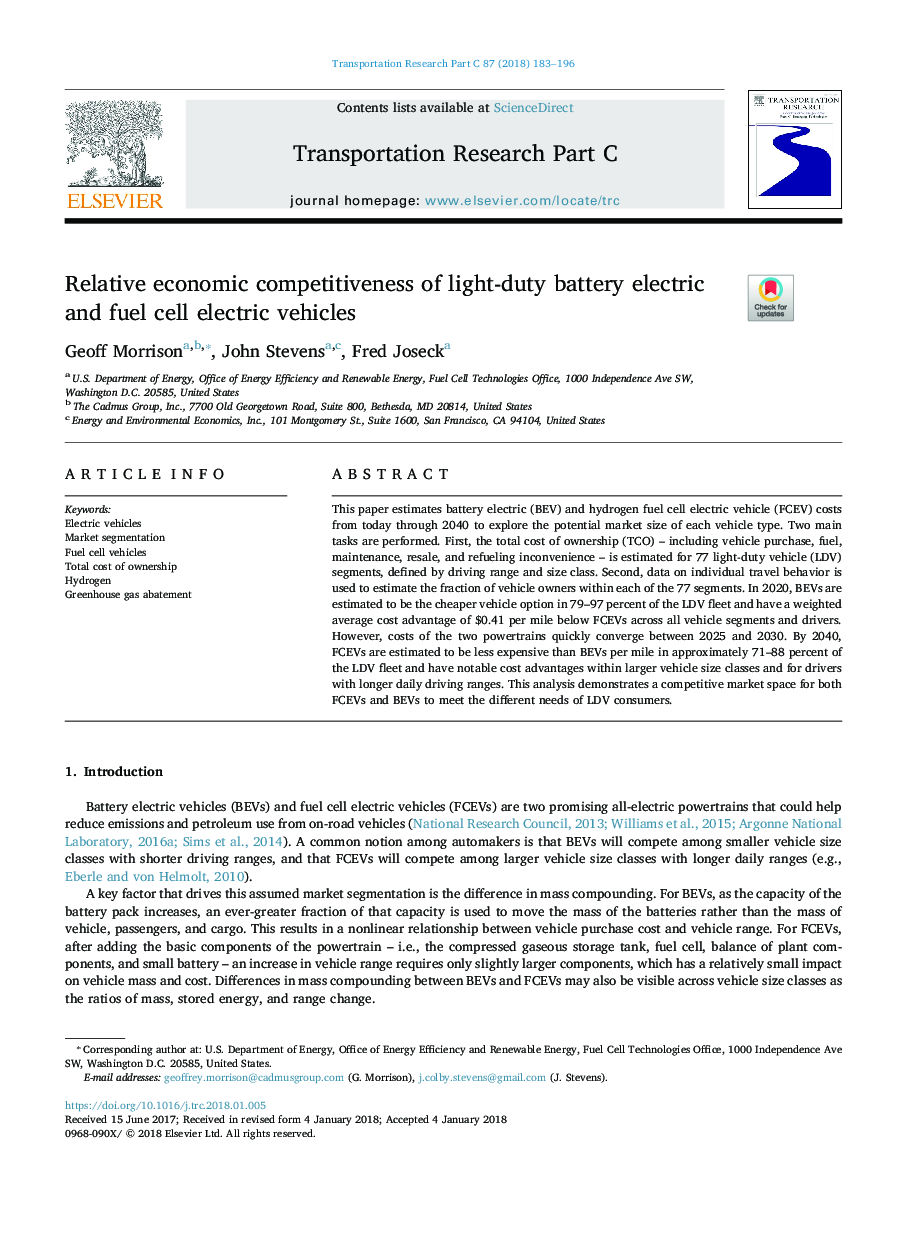| Article ID | Journal | Published Year | Pages | File Type |
|---|---|---|---|---|
| 6936182 | Transportation Research Part C: Emerging Technologies | 2018 | 14 Pages |
Abstract
This paper estimates battery electric (BEV) and hydrogen fuel cell electric vehicle (FCEV) costs from today through 2040 to explore the potential market size of each vehicle type. Two main tasks are performed. First, the total cost of ownership (TCO) - including vehicle purchase, fuel, maintenance, resale, and refueling inconvenience - is estimated for 77 light-duty vehicle (LDV) segments, defined by driving range and size class. Second, data on individual travel behavior is used to estimate the fraction of vehicle owners within each of the 77 segments. In 2020, BEVs are estimated to be the cheaper vehicle option in 79-97 percent of the LDV fleet and have a weighted average cost advantage of $0.41 per mile below FCEVs across all vehicle segments and drivers. However, costs of the two powertrains quickly converge between 2025 and 2030. By 2040, FCEVs are estimated to be less expensive than BEVs per mile in approximately 71-88 percent of the LDV fleet and have notable cost advantages within larger vehicle size classes and for drivers with longer daily driving ranges. This analysis demonstrates a competitive market space for both FCEVs and BEVs to meet the different needs of LDV consumers.
Keywords
Related Topics
Physical Sciences and Engineering
Computer Science
Computer Science Applications
Authors
Geoff Morrison, John Stevens, Fred Joseck,
